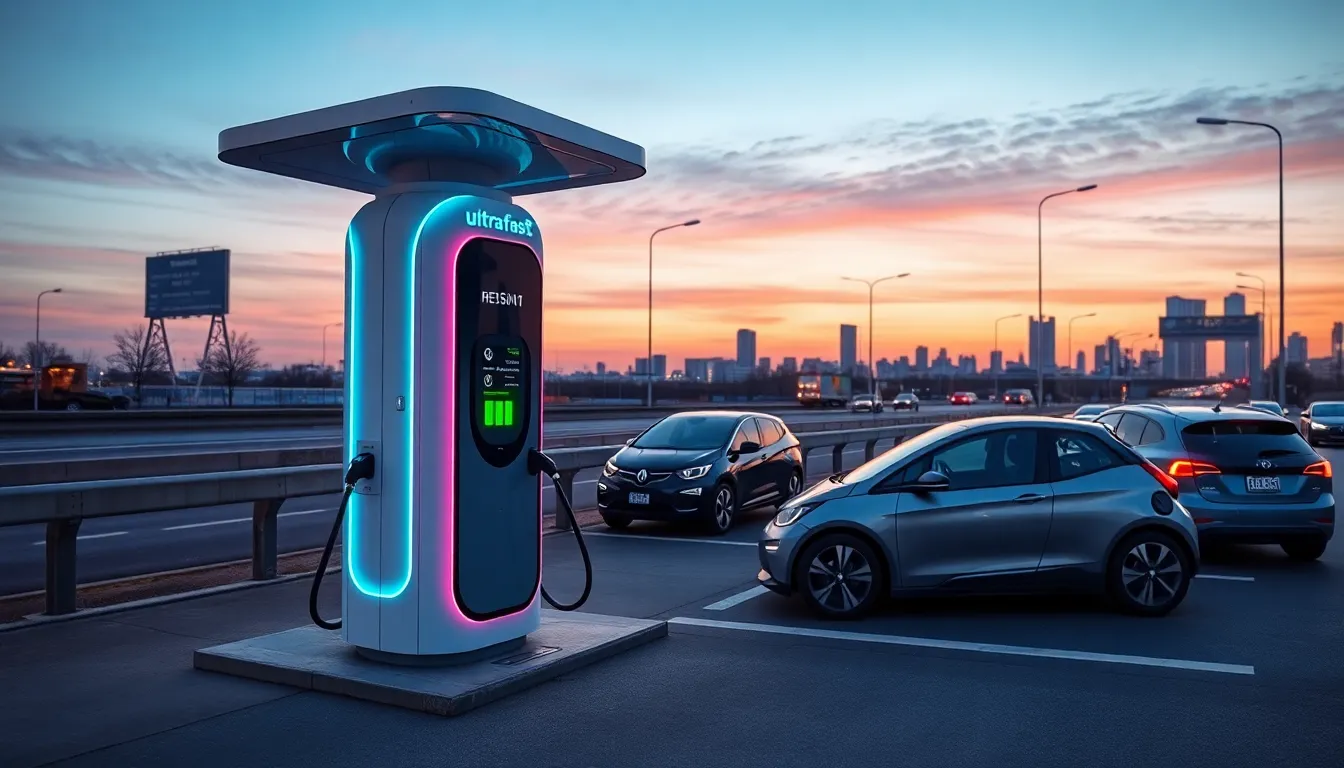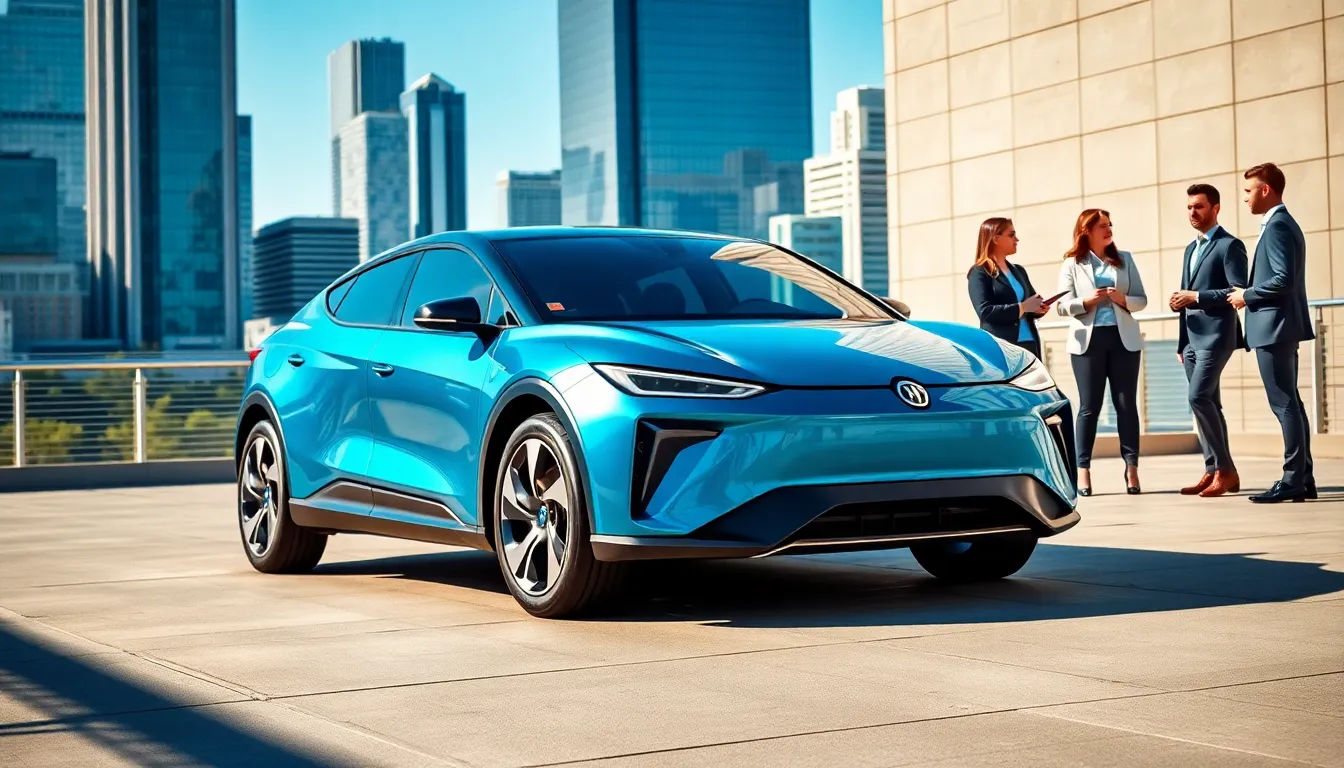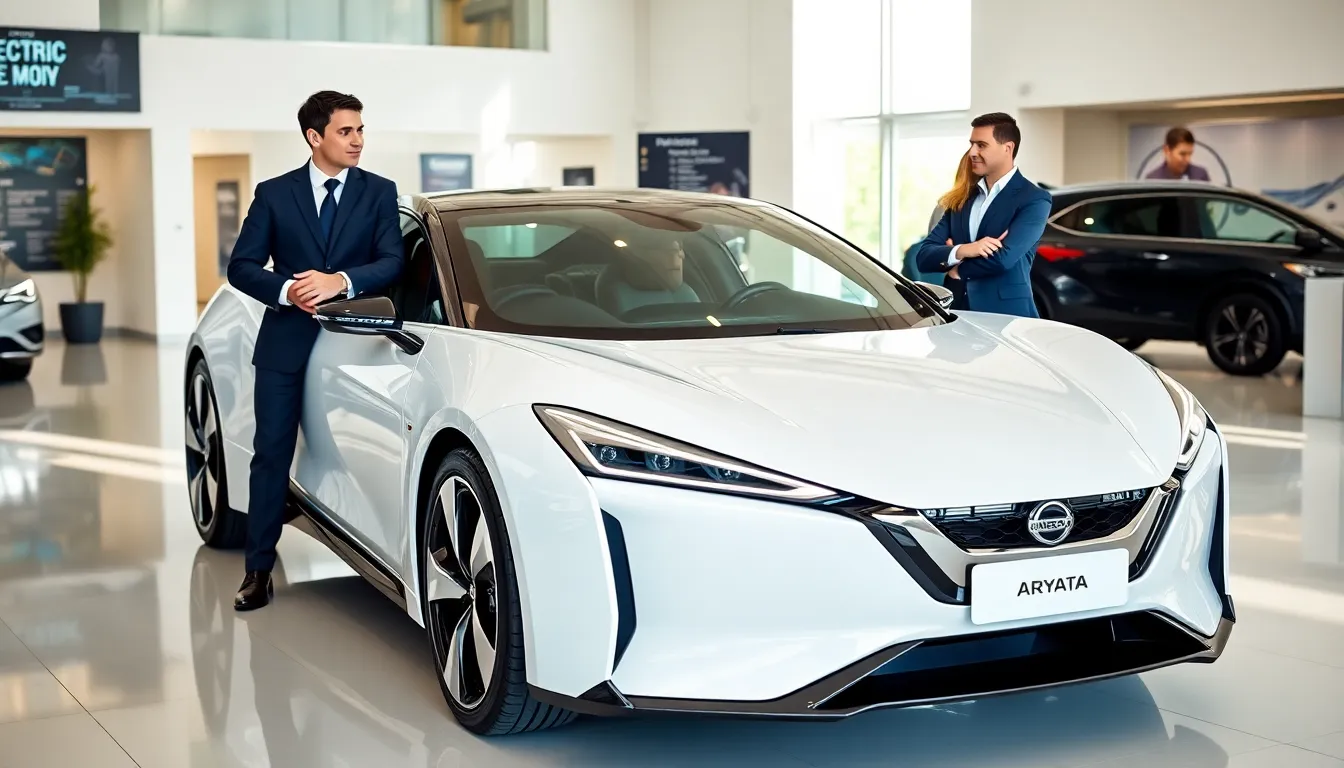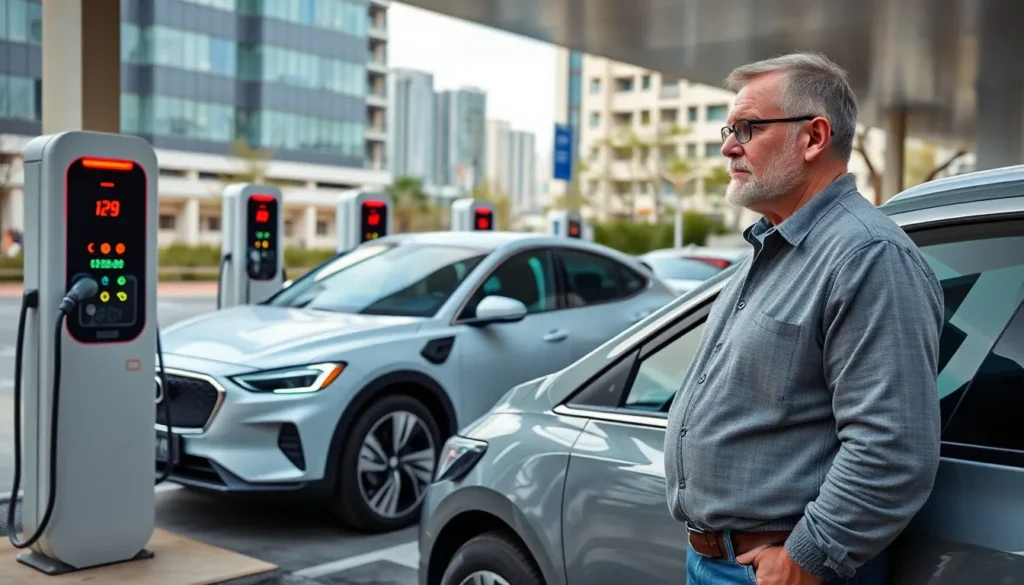Table of Contents
ToggleAs electric vehicles (EVs) gain popularity, the demand for ultra-fast charging stations is skyrocketing. These innovative charging solutions are transforming the way drivers power up, offering convenience and speed that traditional chargers simply can’t match. With the ability to charge an EV in a fraction of the time, ultra-fast stations are paving the way for a more accessible and efficient electric future.
This surge in ultra-fast charging technology not only supports the growing EV market but also addresses the concerns around range anxiety. As infrastructure expands, drivers can confidently embark on longer journeys, knowing they can quickly recharge along the way. Dive into the world of ultra-fast charging stations and discover how they’re revolutionizing the driving experience for electric vehicle owners everywhere.
Overview of Ultra-Fast Charging Stations
Ultra-fast charging stations significantly enhance the efficiency of electric vehicle (EV) charging. These stations typically provide charging power levels ranging from 150 kW to 350 kW, allowing EVs to achieve an 80% charge in approximately 20 to 30 minutes. This rapid charging capability is crucial for long-distance travel, enabling EV drivers to make fewer stops and reducing dwell time at charging locations.
Numerous manufacturers and charging networks are investing in ultra-fast charging technology. Tesla, ChargePoint, and Electrify America are among the key players offering ultra-fast charging solutions. Deployment of these stations is expanding across urban areas, highways, and major travel routes, improving accessibility for EV users.
Technological advancements in battery management systems and chargers further contribute to the effectiveness of ultra-fast charging stations. With improved thermal management and real-time data analysis, stations maximize charging speed while ensuring vehicle safety and battery longevity.
Besides speed, ultra-fast charging stations support renewable energy integration. Many stations utilize solar power or wind energy, aligning with sustainability goals. This development enhances the appeal of EVs by providing eco-friendly charging options.
Overall, the proliferation of ultra-fast charging stations significantly transforms the EV landscape by addressing charging speed, convenience, and sustainability.
Benefits of Ultra-Fast Charging Stations

Ultra-fast charging stations offer significant advantages that enhance the electric vehicle (EV) experience. These benefits include increased speed and efficiency, as well as improved convenience for users.
Speed and Efficiency
Speed is a defining feature of ultra-fast charging stations. These stations deliver power levels ranging from 150 kW to 350 kW, allowing EVs to reach about 80% battery capacity in just 20 to 30 minutes. Efficiency also plays a role, as advancements in battery management systems optimize the charging process, reducing energy loss and minimizing charging time. This combination of high power and efficient technology makes ultra-fast charging stations crucial for long-distance travel, as they enable drivers to recharge quickly and continue their journeys with minimal delays.
Convenience for Users
Convenience is another key benefit of ultra-fast charging stations. Many stations are strategically located along major travel routes and urban areas, making them accessible for users. Availability of multiple charging ports at these stations allows for simultaneous use by several vehicles, reducing wait times. Additionally, many ultra-fast stations feature user-friendly interfaces and payment options, including mobile app support and contactless payments, streamlining the entire charging experience. This ease of access and user interaction significantly enhances the overall appeal and practicality of owning an electric vehicle.
Technology Behind Ultra-Fast Charging
Ultra-fast charging technology plays a critical role in enhancing the electric vehicle (EV) charging experience. This technology allows for rapid power delivery, enabling EVs to charge significantly faster than traditional charging solutions.
Types of Charging Technologies
- DC Fast Charging: This technology uses direct current (DC) to deliver power quickly, typically between 150 kW to 350 kW. It allows EVs to achieve an 80% charge in 20 to 30 minutes.
- Ultra-Fast Charging: Ultra-fast charging stations provide even greater power output, often exceeding 350 kW. These stations are designed for high-performance EVs that support faster charging rates.
- Level 3 Charging: Sometimes referred to as DC fast charging, Level 3 chargers reduce charging time significantly. Ideal for commercial and public use, they support multiple vehicle models simultaneously.
- Wireless Charging: This emerging technology utilizes electromagnetic fields to transfer energy, allowing EVs to charge without physical connectors, though current implementations are still in developmental stages.
Key Components of Charging Stations
- Power Supply Units: These units convert AC power from the grid into usable DC power for charging EVs efficiently.
- Cable and Connector Types: Various standards exist, including CCS (Combined Charging System) and CHAdeMO. Compatibility with multiple vehicle types enhances accessibility.
- Charging Management Systems: These systems control the charging process, optimizing energy flow based on vehicle requirements and preventing overheating.
- User Interface: Intuitive interfaces provide drivers with real-time information on charging status, payment options, and station availability.
- Cooling Systems: Essential for managing heat during charging, these systems ensure safe operation and maintain efficiency, especially at high power levels.
- Smart Grid Integration: Many ultra-fast charging stations connect to smart grids, allowing for dynamic energy distribution and load balancing based on demand.
By understanding these technologies and components, stakeholders can appreciate the innovation driving the adoption of ultra-fast charging stations in the EV market.
Comparison with Standard Charging Stations
Ultra-fast charging stations differ significantly from standard charging stations, particularly in time efficiency and cost analysis. Understanding these differences aids consumers and stakeholders in making informed decisions.
Time Efficiency
Time efficiency remains a critical factor when comparing ultra-fast and standard charging stations. Ultra-fast charging stations provide power levels between 150 kW and 350 kW, enabling an electric vehicle (EV) to reach an 80% charge within 20 to 30 minutes. In contrast, standard charging stations (Level 2) typically deliver around 7 kW to 22 kW, resulting in charging times ranging from 4 to 10 hours for the same charge level. The rapid charging capabilities of ultra-fast stations dramatically reduce downtime, making them ideal for long-distance travel and busy urban environments.
Cost Analysis
Cost analysis reveals distinct differences in pricing models between ultra-fast and standard charging stations. Ultra-fast charging stations often charge on a per-kilowatt-hour basis or may utilize a flat fee for a charging session. The cost per kWh can vary, averaging around $0.25 to $0.50. In comparison, standard charging stations usually offer lower rates, averaging $0.10 to $0.30 per kWh. However, the higher speed of ultra-fast charging may compensate for the increased cost, particularly for commercial fleets or users with time-sensitive travel needs. Understanding these cost dynamics helps consumers prioritize their charging choices based on convenience and budget preferences.
Ultra-fast charging stations are revolutionizing the electric vehicle landscape. Their ability to charge EVs to 80% in just 20 to 30 minutes is a game-changer for long-distance travel. As major players invest in this technology, the network of ultra-fast chargers continues to grow, easing range anxiety and enhancing convenience for drivers.
With advancements in charging technology and infrastructure, these stations are set to play a crucial role in the widespread adoption of electric vehicles. They not only offer a faster and more efficient charging experience but also support the shift towards sustainable transportation. The future of driving is brighter with ultra-fast charging stations leading the charge.







